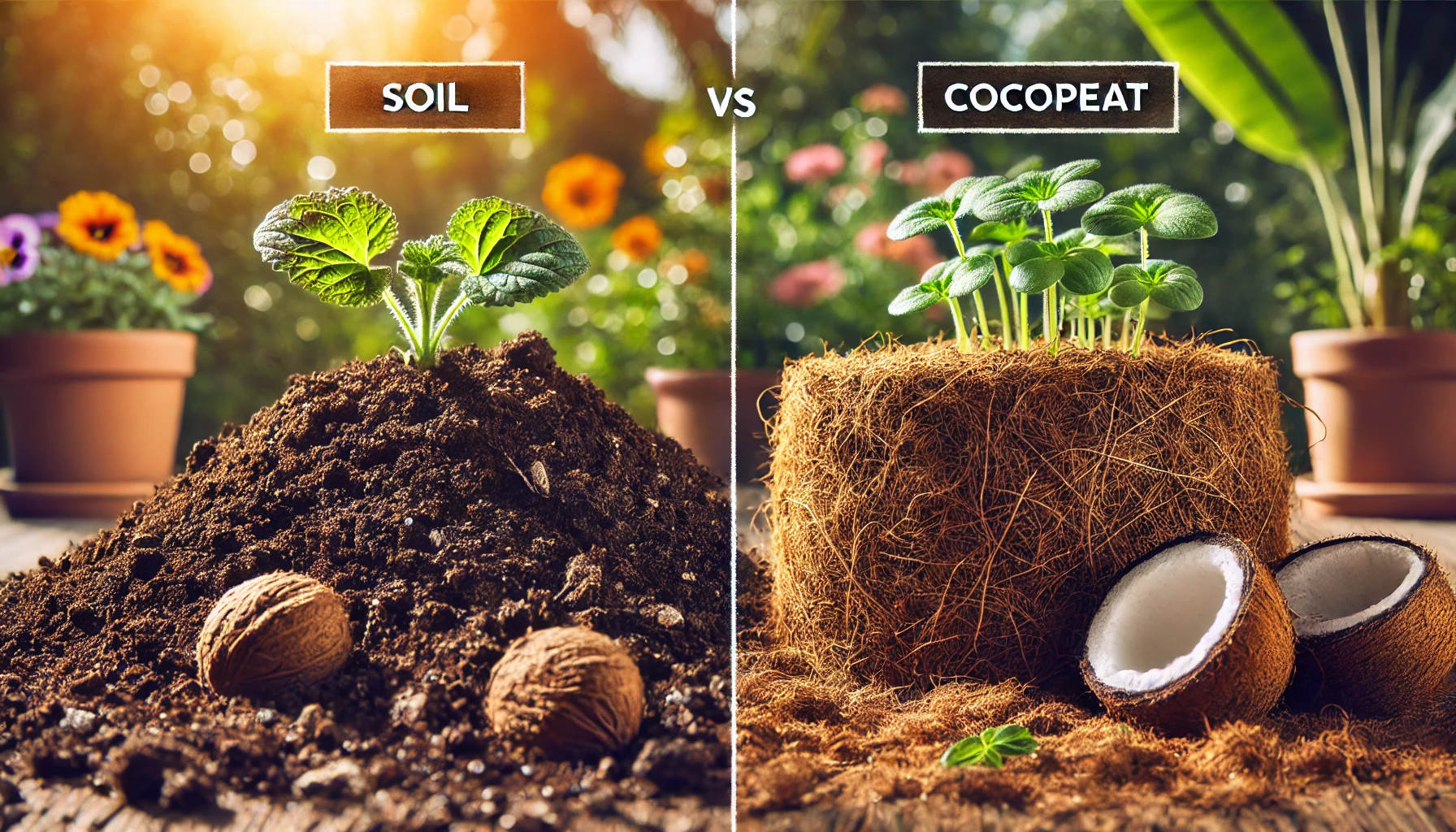
Soils vs Cocopeat: A Detailed Comparison
2025-01-21 • 5 minutes
In gardening, farming, or horticulture, the growth medium strongly affects plant health and yield. Two commonly preferred alternatives are soil and cocopeat. While serving as primary bases for plant growth, these mediums differ significantly. Here's a detailed comparison to help you choose wisely.
What is Soil?
Soil is a natural medium rich in minerals, comprising organic matter, minerals, air, and water. It forms the main medium for traditional farming and gardening.
Advantages of Soil:
- Rich in Nutrients: Soil contains essential nutrients such as nitrogen, phosphorus, and potassium.
- Microbial Activity: It supports microorganisms that enhance nutrient availability.
- Natural: Easily accessible and inexpensive.
- Water Retention: Certain soils like clay and loam retain water well.
Disadvantages of Soil:
- Pests and Diseases: Soil may harbor harmful organisms.
- Variability: Quality varies by location, impacting plant growth.
- Compaction: Over time, soil compaction reduces aeration.
- Drainage Issues: Heavy soils can lead to poor drainage.
What is Cocopeat?
Cocopeat, or coir pith, is a by-product of coconut processing. It is a fibrous, spongy material used as a soilless growing medium.
Advantages of Cocopeat:
- High Water Retention: Retains moisture up to 10 times its weight.
- Good Aeration: Prevents waterlogging and promotes root growth.
- Eco-friendly: A sustainable resource from coconut husks.
- Sterile: Free of pests and pathogens.
- Lightweight: Easier to handle and transport.
Disadvantages of Cocopeat:
- Nutrient Deficiency: Requires supplementation with fertilizers.
- Cost: Generally more expensive than soil.
- Salinity Issues: May contain high salt levels needing leaching.
- Short Lifespan: Breaks down over time, reducing aeration properties.
